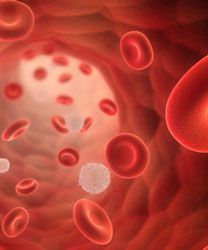Sequential CD19- and CD22-Directed CAR T-Cell Therapy Improves Long-Term Remission in Relapsed/Refractory B-ALL
Sequential administration of CAR T-cell therapy targeting both the CD19 and CD22 antigens demonstrated high complete remission rates and improved long-term survival in patients with relapsed/refractory B-cell acute lymphoblastic leukemia following allogeneic hematopoietic stem cell transplant.

Sequential administration of CAR T-cell therapy targeting both the CD19 and CD22 antigens demonstrated high complete remission (CR) rates and improved long-term survival in patients with relapsed/refractory B-cell acute lymphoblastic leukemia (B-ALL) following allogeneic hematopoietic stem cell transplant (HSCT), according to findings presented at the 2019 European Society for Blood and Marrow Transplantation Annual Meeting.
Thirty days after the first CAR T-cell infusion, 27 (84.4%) patients achieved complete remission (CR), and 100% of these patients were minimum residual disease (MRD) negative. Partial responses following treatment were observed in 4 (12.5%) patients with extramedullary disease (EMD).
“Sequentially combined CD19- and CD22-[directed] CAR T-cell therapies significantly improved outcomes with the rate of overall survival and event-free survival being 87.5% and 58.3%, respectively, at a median follow-up of 10 months,” said lead study author Shuangyou Liu, MD, in a presentation during the meeting.
CAR T-cell therapy targeting CD19 has shown significant efficacy in patients with relapsed/refractory B-ALL; however, long-term remission has not been achieved with single target CAR T-cell therapy, Liu explained.
In the study, Liu and investigators from Beijing Boren Hospital in Beijing, China evaluated whether sequentially applied CD19- and CD22-targeted CAR T cells could improve remission rates in patients with relapsed B-ALL after receiving HSCT. Thirty-two patients with B-ALL and both CD19 and CD22 expression on blast cells who relapsed following allogeneic HSCT were enrolled. Patients had no or minimal graft-versus-host disease (GVHD).
Recipient-derived T cells were collected and transfected by a lentiviral vector encoding the CAR composed of CD3ζ and 4-1BB. The CD19-targeted CAR T-cell product was humanized or murinized for patients previously treated with murinized or humanized CD19-targeted CAR T-cell therapy, respectively, and humanized CD22-directed CAR T-cell therapy was used for all transplanted patients.
Patients underwent fludarabine lymphodepletion with or without cyclophosphamide prior to each infusion. Treatment was evaluated on day 30 and every 1 to 2 months thereafter. MRD was evaluated by flow cytometry and quantitative polymerase chain reaction was used to detect fusion genes; EMD was assessed using PET-CT, CT, or MRI.
The median age was 22 (range, 2.3-55) years. Relapse was detected in the bone marrow in 21 (65.6%) patients, 4 (12.5%) patients had EMD, and 7 (21.9%) patients had both EMD and bone marrow involvement. Complex chromosomal aberrations were detected in 5 (15.6%) patients. Two patients had MLL-AF4+ fusion genes, 3 patients each had E2A-PBX1 and TEL-AML1 fusions genes, and 5 patients had BCR-ABL-1; of these, 3 patients had T3151 mutation. Eighteen (56.2%) patients accepted immediate salvage therapy when necessary.
Treatment failure to chemotherapy, donor lymphocyte infusion, interferon, and murinized CD19-directed CAR T-cell therapy had occurred in 18 patients.
All 32 patients were expected to receive sequentially applied CD19- and CD22-directed CAR T-cell therapies with an interval of 1.5 to 6 months between CAR-T treatments. Of the 32 patients, 26 (81.2%) patients first received CD19-directed CAR T-cell infusion at a median dose of 1.3 x 105 cells/kg (range, 04-9.2 x 105 cells/kg) and 6 (18.8%) patients first received CD22-directed CAR T-cell therapy at a median dose of 1.9 x 105 cells/kg (range, 0.55-6.6 x 105 cells/kg). Twenty-four (75%) patients received both CAR T-cell constructs.
“For B-ALL patients relapsing after allogeneic HSCT, single CD19- or CD22-[directed] infusion resulted in a high CR rate,” Liu remarked.
As previously mentioned, the CR rate was 84.4% and the PR rate was 12.5% 30 days after the first CAR T-cell treatment. One (3.1%) patient died of severe cytokine release syndrome (CRS) and acute hepatic GVHD. CRS was reported in 28 (87.5%) patients; of these, 24 CRS cases were grade 1/2 and 4 cases were grade 3/4. Eight (25%) patients had GVHD; of these, 5 patients had skin and oral involvement, 2 patients had severe acute hepatic GVHD, and one patient had extensive chronic GVHD.
Prior to the second CAR T-cell treatment, 21 patients had achieved CR with the first CAR T-cell infusion; of these, 18 maintained absence of MRD and 3 patients became positive for MRD before the second infusion. Of the 3 patients demonstrating PR after the first CAR T-cell treatment who underwent a second infusion, 2 patients achieved CR and 1 had PR at the day 30 evaluation. All patients receiving a second infusion had either no or grade 1 CRS and no GVHD was reported.
Survival outcomes were improved among the 24 patients who received both CD19- and CD22-directed CAR T-cell infusions. At a median follow-up of 10 months (range, 4.5-15), 21 (87.5%) patients were still alive. No median OS had been calculated; however, 75% of patients demonstrated a 13-month OS. The EFS rate was 58.3% and the median EFS was 12.5 months.
At the time of follow-up, 7 patients had relapsed, 3 of which died of disease progression. Fourteen patients maintained MRD-negative EFS. One patient died of extensive chronic GVHD, 1 patient withdrew from the study, and 1 suffered severe neurologic damage. The remaining 4 patients await the second CAR T-cell infusion.
Liu cautioned that CAR T-cell induced GVHD should be cautiously monitored and that the effect of sequential CAR T-cell therapy was “not good” in patients with multiple EMD.
Liu S, Deng B, Lin Y, et al. Sequential CD19- and CD22-CART cell therapies for relapsed B-cell acute lymphoblastic leukemia after allogeneic hematopoietic stem cell transplantation: 10-month median follow-up. Presented at: 2019 European Society for Blood and Marrow Transplantation Annual Meeting; March 24 to 27, 2019; Frankfurt, Germany. Abstract GS2-4.